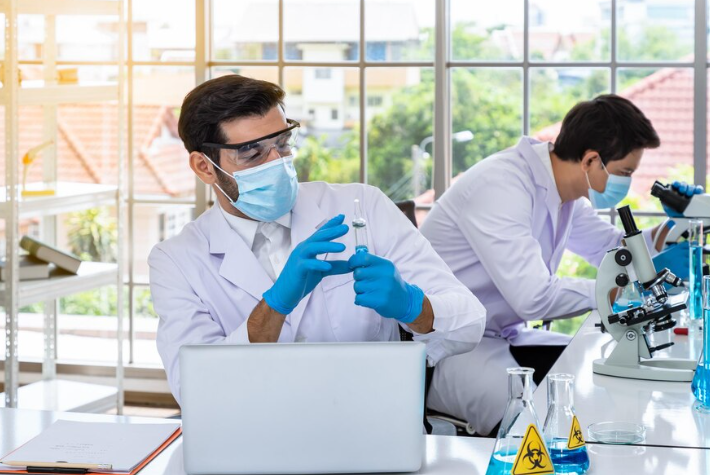Bioassay testing is a crucial tool in scientific research, particularly in fields such as pharmaceutical development and environmental monitoring. By utilizing living organisms to assess the biological activity of a substance, bioassay testing provides valuable insights into the potential effects of chemicals on human health and the environment. In this blog post, we will delve into the world of bioassay testing, exploring what it is, how it works, and its significance in the state of California.
The Essence of Bioassay Testing
Bioassay testing, integral to scientific inquiry and application, functions on a foundational premise: biological systems exhibit specific, measurable responses to various substances, including chemicals, drugs, and environmental contaminants. This analytical method, by leveraging the innate reactions of living cells, tissues, or organisms, serves to quantify the biological activity inherent to a compound. The crux of bioassay testing lies in its ability to discern the potency or concentration of a substance based on its elicited biological effect, a feature that distinguishes it from purely chemical analysis methods.
The approach utilized in bioassay testing varies depending on the specific objectives of the study. For instance, assays may be designed to measure direct physiological responses to a substance, such as enzyme activity or hormone levels, or more complex outcomes like behavioral changes or survival rates in organisms. The selection of the biological system—ranging from simple bacterial cells to complex mammalian models—is guided by the relevance of the system to the substance being tested and the endpoint of interest. This versatility underscores the method’s applicability across a spectrum of scientific fields, including but not limited to pharmacology, toxicology, and environmental science.
At its core, bioassay testing embodies a critical intersection between biological systems and chemical entities, enabling researchers to bridge the gap between in vitro studies and real-world applications. Through this methodology, the nuanced interactions between substances and living systems can be elucidated, facilitating a deeper understanding of their implications for health, safety, and environmental impact.
Types of Bioassays and Their Applications
Bioassay testing encompasses a diverse array of methodologies, each tailored to unveil different facets of biological response to substances. Cell-based assays stand out for their ability to assess the influence of a compound on cellular processes, such as proliferation, viability, and specific biochemical pathways. These assays utilize either primary cells or cell lines and can be engineered to express certain receptors or markers, making them highly versatile for investigating the mode of action of pharmaceuticals or the cytotoxicity of chemicals.
On the other hand, in vivo bioassays employ whole organisms, ranging from small model organisms like zebrafish and Drosophila to rodents, to study systemic effects and simulate real-life exposure scenarios. These assays are invaluable for understanding complex biological responses, including metabolism, behavior changes, and long-term toxicological effects that cannot be mimicked in vitro.
Microbial assays are another category, leveraging the sensitivity of bacteria, yeast, or fungi to detect and quantify the presence of antimicrobial compounds or environmental toxins. These assays are particularly useful in antibiotic discovery and water quality testing, offering rapid, cost-effective screening.
Enzyme assays focus on the interaction between substances and specific enzymes, quantifying the activity changes induced by the substance. This type of bioassay is critical in drug discovery for identifying compounds that inhibit or activate enzymes implicated in disease processes.
The broad spectrum of bioassay types underscores their pivotal role in various scientific domains. Whether for pharmaceutical screening, environmental monitoring, or toxicity assessment, bioassays offer indispensable tools for elucidating the biological impacts of chemical entities, guiding research and regulatory decisions towards safer, more effective solutions.
Bioassay Testing in Pharmaceutical Development
In pharmaceutical development, bioassay testing emerges as a vital component in the intricate journey from compound discovery to drug approval. This process enables the identification and validation of compounds with therapeutic potential by measuring their biological activity in living models. Crucially, bioassays facilitate the early detection of pharmacodynamic properties and toxicological profiles, thereby informing the preclinical development phase with essential data on efficacy and safety.
Through bioassay testing, pharmaceutical researchers can systematically screen vast libraries of chemical entities, pinpointing those that exhibit promising biological responses. This screening involves assessing the interaction between the compound and target cells or tissues, allowing for the selection of lead compounds based on specific biological activity criteria. Subsequently, these leads undergo further optimization to enhance their pharmacological properties, a step crucial for advancing a compound toward clinical evaluation.
Moreover, bioassays play a pivotal role in elucidating the mechanisms through which potential drugs exert their effects. Understanding the molecular interactions and pathways involved is fundamental for predicting the therapeutic outcomes and potential side effects in humans. This knowledge is instrumental in guiding the design of clinical trials and in meeting the stringent regulatory requirements for drug approval.
Additionally, bioassay testing contributes to the determination of dose-response relationships, providing critical information on the minimum effective dose and maximum tolerated dose. Such data are indispensable for establishing safe and effective dosage guidelines in clinical practice.
As the pharmaceutical landscape continues to evolve, bioassay testing remains at the heart of drug discovery and development, enabling the progression of novel therapeutics from concept to clinic with a robust foundation of biological evidence.
The Role of Bioassays in Environmental Monitoring
Environmental monitoring harnesses the power of bioassay testing to scrutinize the impacts of chemical contaminants on ecosystems and gauge the potential threats to both wildlife and human populations. This method involves exposing various organisms to environmental samples, thereby enabling the assessment of pollutant toxicity, including that of pesticides and industrial waste products.
In the context of California, a state with vast and varied ecosystems, bioassay testing becomes indispensable for ensuring the health of aquatic environments. Through the application of bioassays, scientists can study the effects of pollution on key species such as fish and algae, which serve as indicators of the ecological well-being of water bodies. These tests help in pinpointing pollution sources, tracking the dispersion of harmful substances, and assessing the efficacy of pollution control measures.
California’s extensive agricultural and industrial activities necessitate rigorous environmental oversight, in which bioassay testing plays a central role. The data obtained from bioassays guide regulatory bodies in formulating policies and interventions to mitigate environmental damage. For instance, bioassays can inform the regulation of pesticide use by identifying substances with unacceptable levels of toxicity to non-target organisms, thereby preventing biodiversity loss and protecting food chains.
Moreover, the strategic application of bioassay testing in environmental monitoring supports California’s initiatives toward sustainable development and conservation. By continually evaluating the biological impact of anthropogenic chemicals, the state can make informed decisions to preserve its natural heritage for future generations, ensuring a balanced coexistence between human activities and environmental preservation.
Challenges and Advances in Bioassay Testing
Bioassay testing, despite its broad utility across scientific fields, confronts a series of challenges that necessitate ongoing refinement and innovation. A primary concern involves the inherent variability in biological responses, which can introduce a degree of uncertainty into assay results. This variability may stem from differences in organismal health, age, or genetic background, potentially complicating the interpretation of bioassay outcomes. Moreover, the lack of standardized protocols across laboratories can further exacerbate discrepancies in data, hindering the comparability of findings across studies.
Ethical considerations also play a significant role in the discourse surrounding bioassay testing, particularly with regard to the use of vertebrate animals. The ethical imperative to minimize animal suffering and reduce the number of animals used in research has prompted the development of alternative methodologies. In response, there has been a marked shift towards employing in vitro systems and computational models as replacements or supplements to traditional in vivo assays. These alternatives not only address ethical concerns but also offer advantages in terms of scalability, speed, and control over experimental variables.
The advent of high-throughput screening (HTS) technologies represents a significant advance, allowing for the rapid evaluation of a vast number of compounds against a variety of biological targets. This approach, combined with the refinement of in vitro models that closely mimic human physiological conditions, promises to enhance the predictive value of bioassay testing. Such innovations are critical for navigating the challenges inherent in bioassay testing, ensuring its continued relevance and efficacy in scientific research.
The Future of Bioassay Testing in California
As California advances, bioassay testing is set to play an increasingly important role in tackling key environmental and public health issues. With an unwavering commitment to environmental stewardship and cutting-edge scientific research, the state is uniquely equipped to enhance and expand the application of bioassay methodologies. The integration of innovative technologies, such as high-throughput screening and sophisticated in vitro models, will likely catalyze the development of more predictive, efficient, and ethically responsible bioassay approaches. This progression promises to not only streamline the assessment and management of chemical risks but also to foster a more profound understanding of their implications for ecosystems and human health. Embracing these advancements, California stands on the cusp of setting new benchmarks for bioassay testing, reinforcing its role as a leader in environmental protection, public health safeguarding, and scientific discovery.







